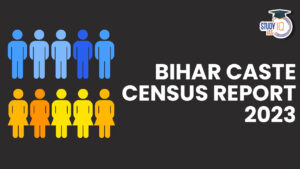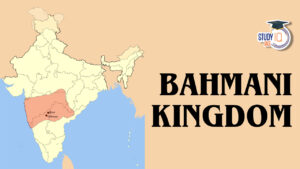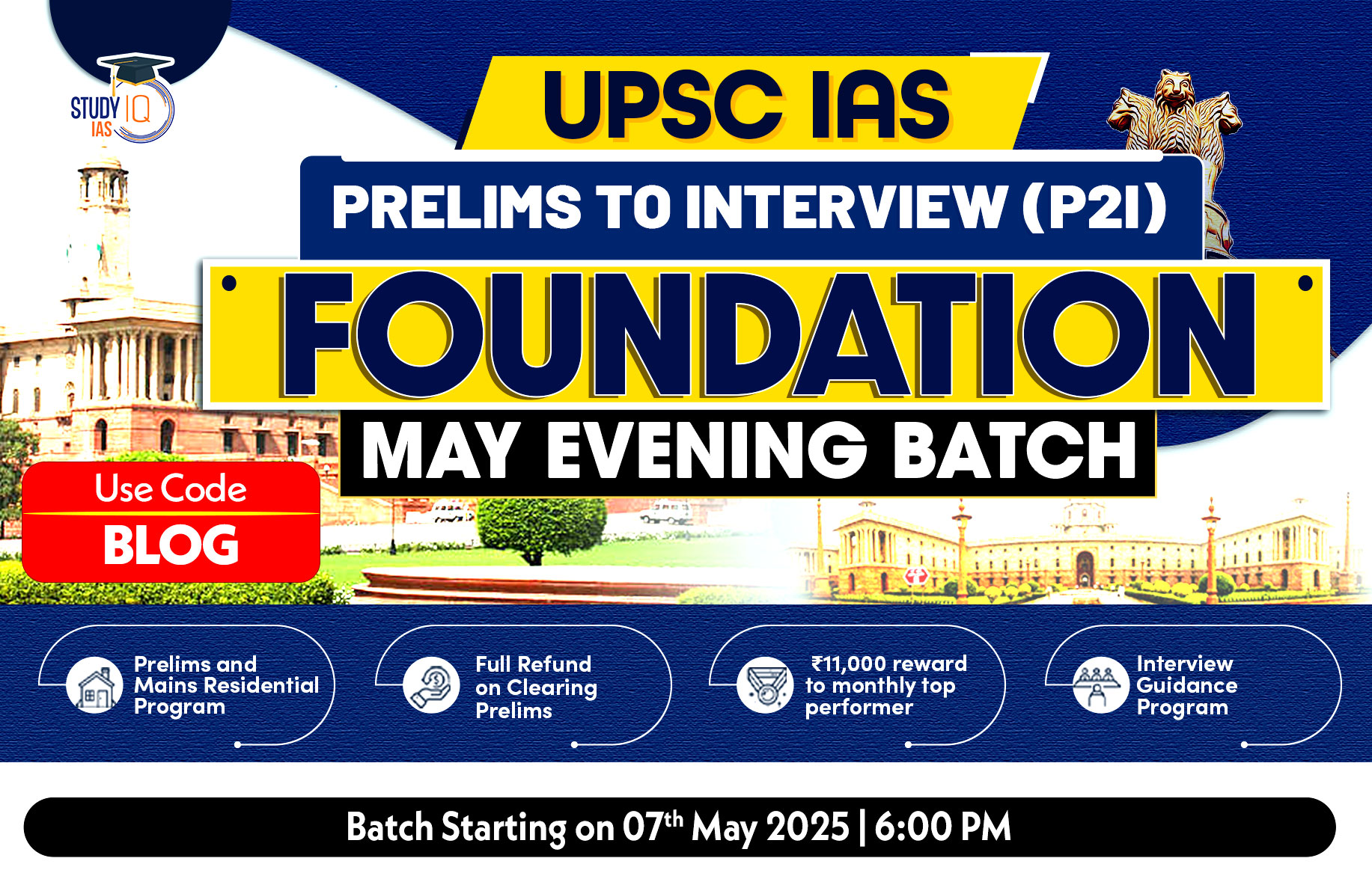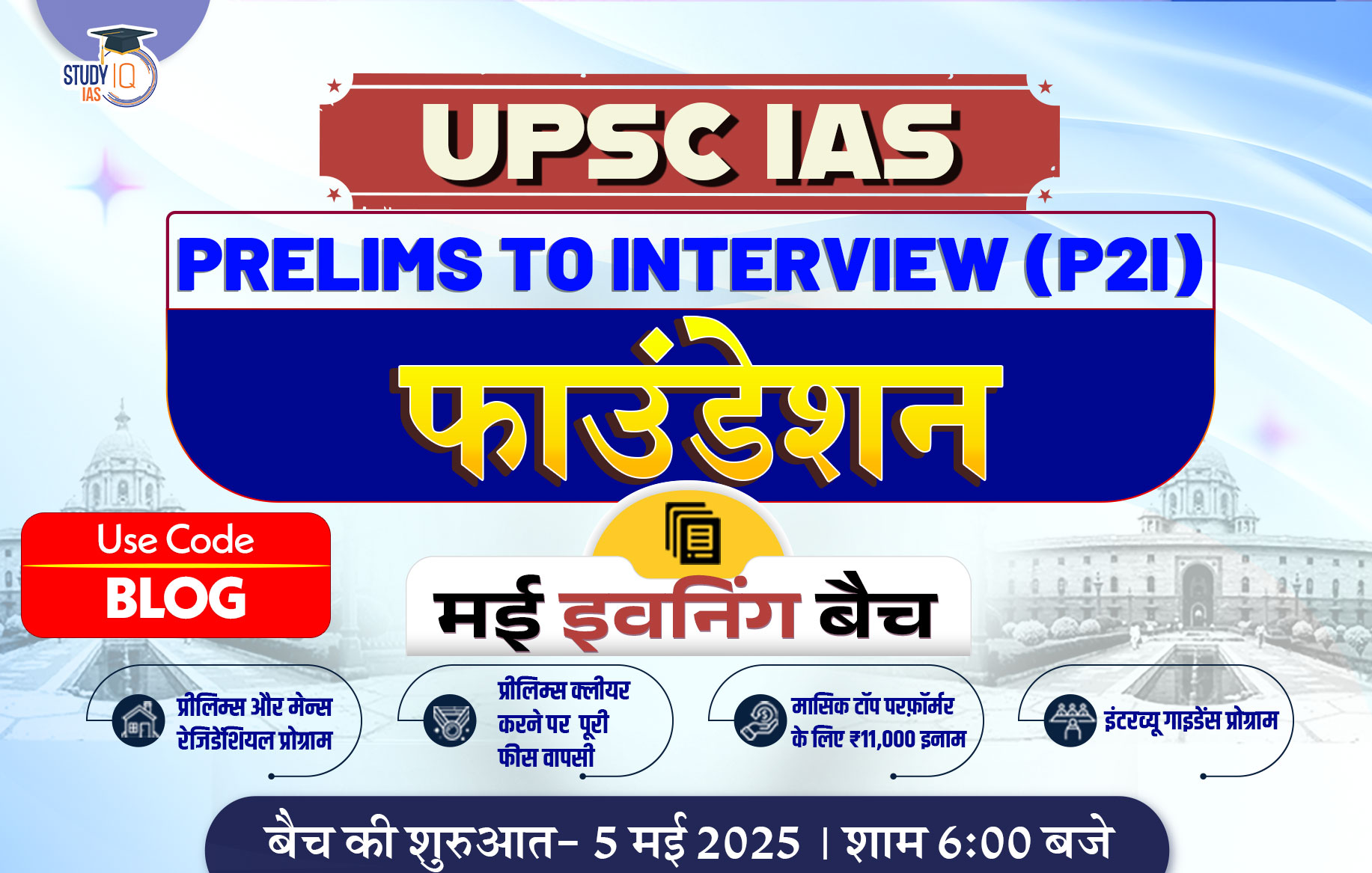Table of Contents
Round Table Conferences
1929 saw a spike in political fervor as Gandhi called for an act of civil disobedience to protest the Simon Commission findings and Bhagat Singh detonated a bomb in Meerut. In his infamous Irwin proclamation, Viceroy Lord Irwin pledged a round table discussion following the delivery of the Simon commission findings.
Congress agreed to abstain from the conference, start a Civil Disobedience Movement, and set Purna Swaraj as its ultimate goal at its Lahore session in December 1929. Jawahar Lal Nehru was the president at the time. The Labour Party-led British government convened the round table talks to explore the constitutional reforms in India on an equal basis. The administration was prepared to accede to the demands of Gandhi and the Congress, to put an end to the movement, and to participate in the round table discussion.
The round table conference’s goal should be to adopt the dominion status, and the fundamental idea behind the status should be approved right away. The conference must have representation from the majority of the congress. Political prisoners must be given a wide amnesty and subject to an arbitration policy. Viceroy Irwin rejected the demands made in the Delhi Manifesto by stating that the conference was not intended to address those issues.
First Round Table Conference
Demands for India to be given dominion status were growing in some sectors of the British political system. In India, the swaraj, or self-rule, movement was in full swing, with the charismatic Gandhi leading the way.
Muhammad Ali Jinnah’s advice to Lord Irwin, the viceroy of India at the time, and James Ramsay MacDonald, the British prime minister at the time, as well as the Simon Commission report, served as the foundation for the conferences. For the first time, Indians and Britons interacted as “equals.” The inaugural conference started on November 12th, 1930. Many more Indian groups were present, despite the Congress and some notable corporate figures declining to attend.
Pratham Golmej Sammelan or पहला गोल मेज सम्मेलन
पहला गोल मेज सम्मेलन नवम्बर 1930 में आयोजित किया गया जिसमें देश के प्रमुख नेता शामिल नहीं हुए, इसी कारण अंतत: यह बैठक निरर्थक साबित हुई। यह आधिकारिक तौर पर जॉर्ज पंचम ने 12 नवम्बर 1930 को प्रारम्भ किया और इसकी अध्यक्षता ब्रिटेन के प्रधानमंत्री, रामसे मैकडॉनल्ड ने की। तीन ब्रिटिश राजनीतिक दलों का प्रतिनिधित्व सोलह प्रतिनिधियों द्वारा किया गया। अंग्रेजों द्वारा शासित भारत से ५७ राजनीतिक नेताओं और रियासतों से १६ प्रतिनिधियों ने भाग लिया। हालांकि, भारतीय राष्ट्रीय कांग्रेस और व्यापारिक नेताओं ने सम्मलेन में भाग नहीं लिया। उनमें से कई नेता सविनय अवज्ञा आन्दोलन में भाग लेने के कारण जेल में थे।
जनवरी 1931 में गाँधी जी को जेल से रिहा किया गया। अगले ही महीने वायसराय के साथ उनकी कई लंबी बैठके हुईं। इन्हीं बैठकों के बाद गांधी-इरविन समझौते पर सहमति बनी जिसकी शर्तो में सविनय अवज्ञा आंदोलन को वापस लेना, सारे कैदियों की रिहाई और तटीय इलाकों में नमक उत्पादन की अनुमति देना शामिल था। रैडिकल राष्ट्रवादियों ने इस समझौते की आलोचना की क्योंकि गाँधी जी वायसराय से भारतीयों के लिए राजनीतिक स्वतंत्रता का आश्वासन हासिल नहीं कर पाए थे। गाँधी जी को इस संभावित लक्ष्य की प्राप्ति के लिए केवल वार्ताओं का आश्वासन मिला था।
पहला गोल मेज सम्मेलन नवम्बर 1930 में आयोजित किया गया जिसमें देश के प्रमुख नेता शामिल नहीं हुए, इसी कारण अंतत: यह बैठक निरर्थक साबित हुई। यह आधिकारिक तौर पर जॉर्ज पंचम ने 12 नवम्बर 1930 को प्रारम्भ किया और इसकी अध्यक्षता ब्रिटेन के प्रधानमंत्री, रामसे मैकडॉनल्ड ने की। तीन ब्रिटिश राजनीतिक दलों का प्रतिनिधित्व सोलह प्रतिनिधियों द्वारा किया गया। अंग्रेजों द्वारा शासित भारत से ५७ राजनीतिक नेताओं और रियासतों से १६ प्रतिनिधियों ने भाग लिया। हालांकि, भारतीय राष्ट्रीय कांग्रेस और व्यापारिक नेताओं ने सम्मलेन में भाग नहीं लिया। उनमें से कई नेता सविनय अवज्ञा आन्दोलन में भाग लेने के कारण जेल में थे।
जनवरी 1931 में गाँधी जी को जेल से रिहा किया गया। अगले ही महीने वायसराय के साथ उनकी कई लंबी बैठके हुईं। इन्हीं बैठकों के बाद गांधी-इरविन समझौते पर सहमति बनी जिसकी शर्तो में सविनय अवज्ञा आंदोलन को वापस लेना, सारे कैदियों की रिहाई और तटीय इलाकों में नमक उत्पादन की अनुमति देना शामिल था। रैडिकल राष्ट्रवादियों ने इस समझौते की आलोचना की क्योंकि गाँधी जी वायसराय से भारतीयों के लिए राजनीतिक स्वतंत्रता का आश्वासन हासिल नहीं कर पाए थे। गाँधी जी को इस संभावित लक्ष्य की प्राप्ति के लिए केवल वार्ताओं का आश्वासन मिला था।
नवम्बर 1930 में आयोजित किया गया जिसमें देश के प्रमुख नेता शामिल नहीं हुए, इसी कारण अंतत: यह बैठक निरर्थक साबित हुई। यह आधिकारिक तौर पर जॉर्ज पंचम ने 12 नवम्बर 1930 को प्रारम्भ किया और इसकी अध्यक्षता ब्रिटेन के प्रधानमंत्री, रामसे मैकडॉनल्ड ने की। तीन ब्रिटिश राजनीतिक दलों का प्रतिनिधित्व सोलह प्रतिनिधियों द्वारा किया गया। अंग्रेजों द्वारा शासित भारत से ५७ राजनीतिक नेताओं और रियासतों से १६ प्रतिनिधियों ने भाग लिया। हालांकि, भारतीय राष्ट्रीय कांग्रेस और व्यापारिक नेताओं ने सम्मलेन में भाग नहीं लिया। उनमें से कई नेता सविनय अवज्ञा आन्दोलन में भाग लेने के कारण जेल में थे।
जनवरी 1931 में गाँधी जी को जेल से रिहा किया गया। अगले ही महीने वायसराय के साथ उनकी कई लंबी बैठके हुईं। इन्हीं बैठकों के बाद गांधी-इरविन समझौते पर सहमति बनी जिसकी शर्तो में सविनय अवज्ञा आंदोलन को वापस लेना, सारे कैदियों की रिहाई और तटीय इलाकों में नमक उत्पादन की अनुमति देना शामिल था। रैडिकल राष्ट्रवादियों ने इस समझौते की आलोचना की क्योंकि गाँधी जी वायसराय से भारतीयों के लिए राजनीतिक स्वतंत्रता का आश्वासन हासिल नहीं कर पाए थे। गाँधी जी को इस संभावित लक्ष्य की प्राप्ति के लिए केवल वार्ताओं का आश्वासन मिला था।
Who shared the first round table conference?
The first Round Table Conference convened by Labour Government Prime Minister Ramsay McDonald from 12 November 1930 to 19 January 1931 in London. The Round Table Conference officially inaugurated by His Majesty George V on November 12, 1930, in Royal Gallery House of Lords at London.
Round Table Conference Dates
- The First Round Table Conference was held on 12 November 1930 in London. It was the first conference arranged between the Britishers and the Indians as equals. It was boycotted by the Indian National Congress.
- The Second Round Table Conference was held in London from 7 September 1931 to 1 December 1931 with the participation of Gandhi and the Indian National Congress.
- The third Round Table Conference took place between 17 November 1932 and 24 December 1932.
First Round Table Conference Features
The inaugural Round Table Conference, which took place in London between November 1930 and January 1931, was presided over by Ramsay MacDonald. The British and Indians finally met on an equal footing at this point. The Congress and a few notable business figures declined to attend.
The Princely States, Muslim League, Justice Party, Hindu Mahasabha, and others were present. Little was achieved as a result of the conference. The British government acknowledged that any discussion regarding India’s future constitutional governance would need to include involvement from the Indian National Congress.
First Round Table Conference Participants
The First Round Table Conference was attended by the following individuals:
- Three British political parties sent a total of 16 delegates.
- There were 74 Indian delegates in total.
- 58 representatives from political parties in India.
- 16 delegates from princely states
Universities, Burma, Sindh, landlords (from Bihar, the United Provinces, and Orissa), and other provinces were also represented. However, because the most of them were behind bars for their involvement in the Civil Disobedience Movement, neither the Indian National Congress nor any important political or economic leaders from India participated.
First Round Table Conference Issues
One of the topics that was covered was the structure of the federal government. The provincial charter was considered. Defense Services for Minorities in Sindh and the Northwest Frontier Provinces. Legislative accountability of the executive Separate electorates for “untouchables” was supported by Dr. B. R. Ambedkar. A national federation was suggested by Tej Bahadur Sapru. The Muslim League supported this. The princely states agreed, provided that their internal sovereignty is upheld.
First Round Table Conference Outcome
Between 1930 and 1931, the First Round Table Conference took place. Although the Round Table Conference (RTC) amendments were approved, they were never put into practice. The Civil Disobedience Movement was continued by Indian National Congress leaders during the First RTC. The First Round Table Conference was therefore considered a failure.
The British government expressed hope for INC leaders’ attendance at the Second Round Table Conference and acknowledged the significance of the Congress Party’s participation in Round Table Conferences for successful reform implementation. The Gandhi-Irwin Pact, which put an end to the Civil Disobedience Movement and decided to participate in the Second RTC, was signed by Mahatma Gandhi and Lord Irwin in March 1931. The British government administration recognised the importance of including the Indian National Congress in discussions about India’s future constitutional arrangements.
Second Round Table Conference
The Second Round Table Conference, which was convened in London from 7 September 1931 to 1 December 1931 to address the shortcomings of the First Round Table Conference, included Gandhi and the Indian National Congress, who had been particularly invited for the Conference.
Second Round Table Conference Participants
The participants included James Ramsay MacDonald, the British Prime Minister, and British leaders from several political parties. the princes, maharajas, and divans of India’s numerous princely realms. The Maharaja of Indore, the Maharaja of Rewa, the Maharaja of Baroda, the Nawab of Bhopal, the Maharaja of Bikaner, the Maharaja of Patiala, Sir Muhammad Akbar Hyadi of Hyderabad, Mirza Ismail of Mysore, and many more princes participated in the Second Round Table Conference.
- Gandhi is the lone representative of the Indian National Congress, the group representing British Indians.
- There were numerous Muslim participants, including Mohammed Ali Jinnah, Muhammad Iqbail, Aga Khan III, Muhammad Zafarullah Khan, Maulana Shaukat Ali, and Raja Sher Muhammad Khan of Domeli.
- Representatives of Hinduism: B. Diwan Bahadur Raja Narendra NAth, M. R. Jayakar, and S. Moonje.
- On behalf of the downtrodden classes: Rattamalai Srinivasan, as well as R. Ambedkar.
- Sardar Ujjal Singh and Sardar Sampuran Singh are the Sikh delegates.
- Radhabai Subbarayan and Sarojini Naidu are female representations.
- Liberal Representatives: Justice Party, Parsis, Anglo-Indians, Sindhis, businesspeople, academics, Burmese, and Europeans.
Second Round Table Conference Important Events
The main distinction between the second Round Table Conference and the first was the inclusion of the Indian National Congress. The conference officially started on September 7th, 1931. The Indian National Congress, which was solely represented by Gandhi, participated because of the Gandhi-Irwin pact.
The second significant difference was that, unlike the last conference, Ramsay MacDonald, the British Prime Minister, was now in charge of a National government rather than a Labor one. The British supported creating a distinct electorate as a communal reward for the representation of minorities in India.
Gandhi rejected this incentive because he disagreed with the notion that minorities should be treated differently from Hindus. Gandhi and Ambedkar presented opposing viewpoints on the communal award of a separate electorate for the untouchables, who were regarded as a minority and were divided based on their ideas, at this Round Table session. With the aid of the Poona Pact, 1932, the two of them were able to resolve this matter in the end.
Second Round Table Conference Outcomes
Due to the numerous conflicts and differences among the attendees, the Second Round Table Conference was regarded as a failure. It was believed that the Indian National Congress spoke for the entire nation. The other participants and the party leaders disagreed with the Indian National Congress’s assertion.
Third Round Table Conference
The third round table discussion served as the conclusion. The incident happened on November 17, 1932. Due to their displeasure, the Indian National Congress made the decision to skip the convention. Both INC and the British Labour Party declined to attend the conference. There were just 46 people left from the summit, and some important political figures were not present. It occurred between September 1931 and March 1933. The 1935 Government of India Act was suggested to undergo a number of revisions. All of these works were completed under the supervision of Sir Samuel Hoare.
Third Round Table Conference Participants
Only 46 delegates attended this Third Round Table conference because the majority of the political leaders were unable to attend. The British Labor Party declined to attend the conference, and the Indian National Congress was not invited. Aga Khan III represented the British Indians.
The princely realms of India were represented by princes and the divans. The conference included speakers like Raja Oudh Narain Bisarya of Bhopal, Wajahat Hussain of Jammu & Kashmir, Mirza Ismail – Dewan of Mysore, V. T. Krishnamachari – Divan of Baroda, Nawab Liaqat Hayat Khan of Patiala, etc. B. R. Ambedkar stood in for the downtrodden classes. Begum Jahanara served as the women’s representative. A variety of people, including Europeans, Labors, Anglo-Indians, and others, were Liberal representatives.
Third Round Table Conference Important Events
Nothing significant occurred at this conference because there weren’t enough attendees to conduct an adequate debate. But the British Parliament later debated its proposals.
Third Round Table Conference Outcomes
The absence of the political leaders and Maharajas made this round table session ineffective, and nothing significant was discussed. The recommendations made at this round table conference were written down and published in a white paper in 1933, which was then discussed in the British Parliament. The British parliament then examined the round table conference’s suggestions and initiatives. Based on this, the Government of India Act of 1935 was passed.
The Civil Disobedience Movement and the Round Table Conferences were held concurrently. Irwin agreed to almost all of Gandhi’s demands after the First Round Table, which put the British government on the defensive for the first time. The Gandhi-Irwin Pact was broken at the second round table conference, which was conducted under the new Viceroy. The freedom fighter was subjected to countless crimes by the police, who engaged in outright terror. Nationalist publications were outlawed, while censorship of nationalist journals was reinstated.
Once more, the leaders of Congress were absent from the third round table conference. The Community Award made B.R. Ambedkar, who attended all three conferences, the happiest person there. The Award, which reserves seats for minorities, is also evident in contemporary politics. Gandhi’s call for Joint Electorates did not receive much support from the delegates. Even the princes of India weren’t overly excited about a federation. The Round Table Conference’s outcome was inconclusive due to the Indian participants’ lack of cooperation.



 Bihar Caste Census Report 2023, Caste Wi...
Bihar Caste Census Report 2023, Caste Wi...
 Bahmani Kingdom (1347-1527 AD), History,...
Bahmani Kingdom (1347-1527 AD), History,...
 Indus River System, Tributaries, and Sin...
Indus River System, Tributaries, and Sin...





















